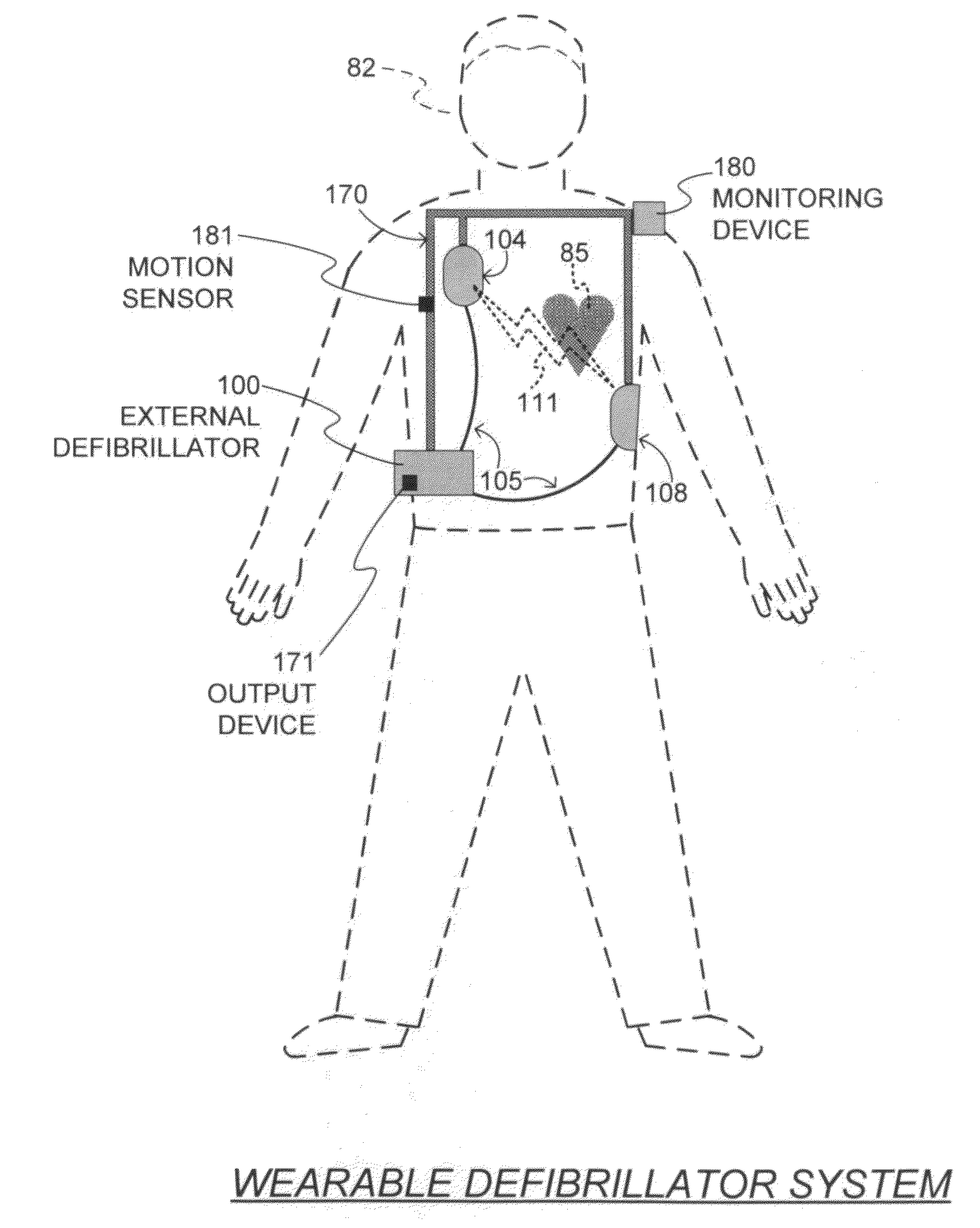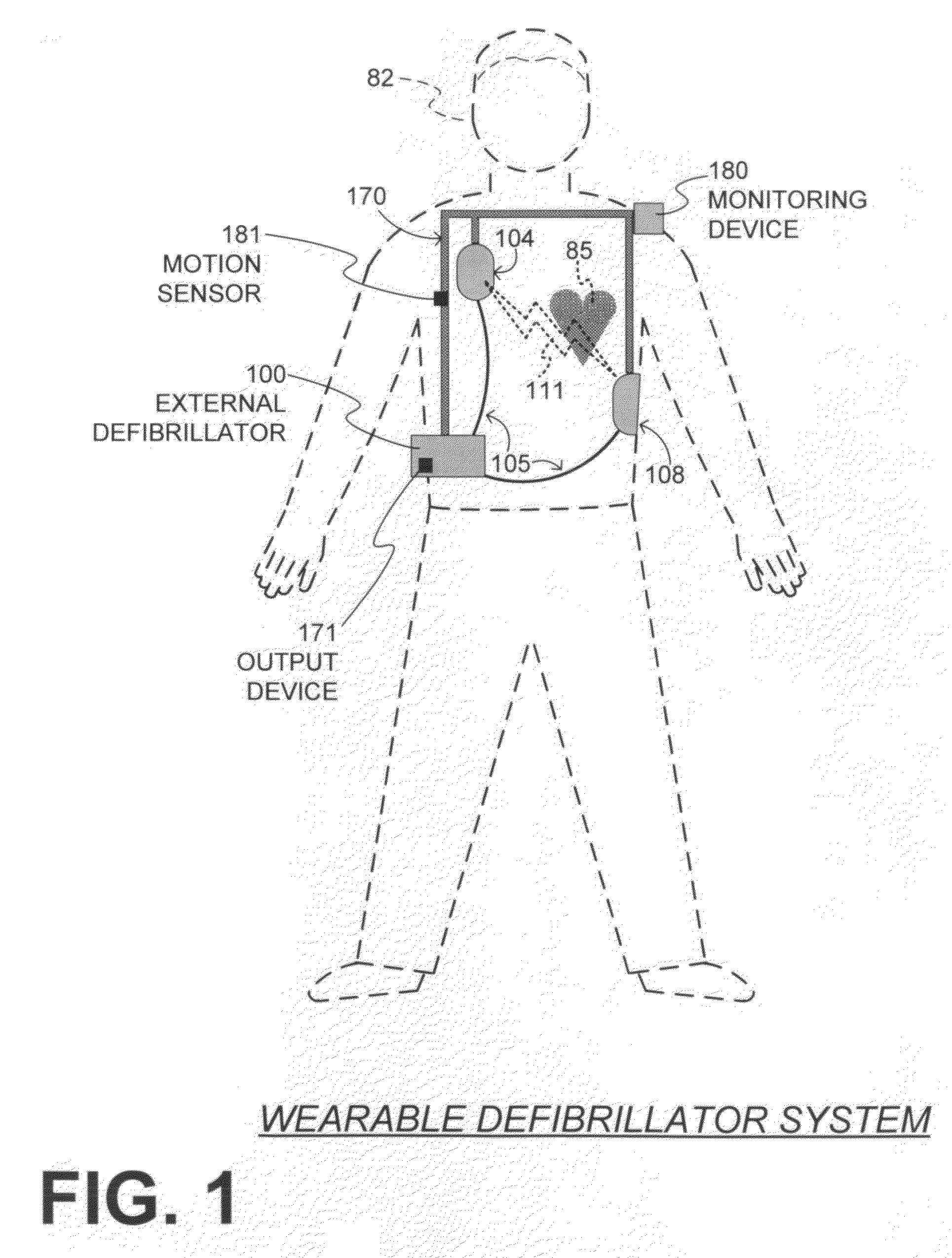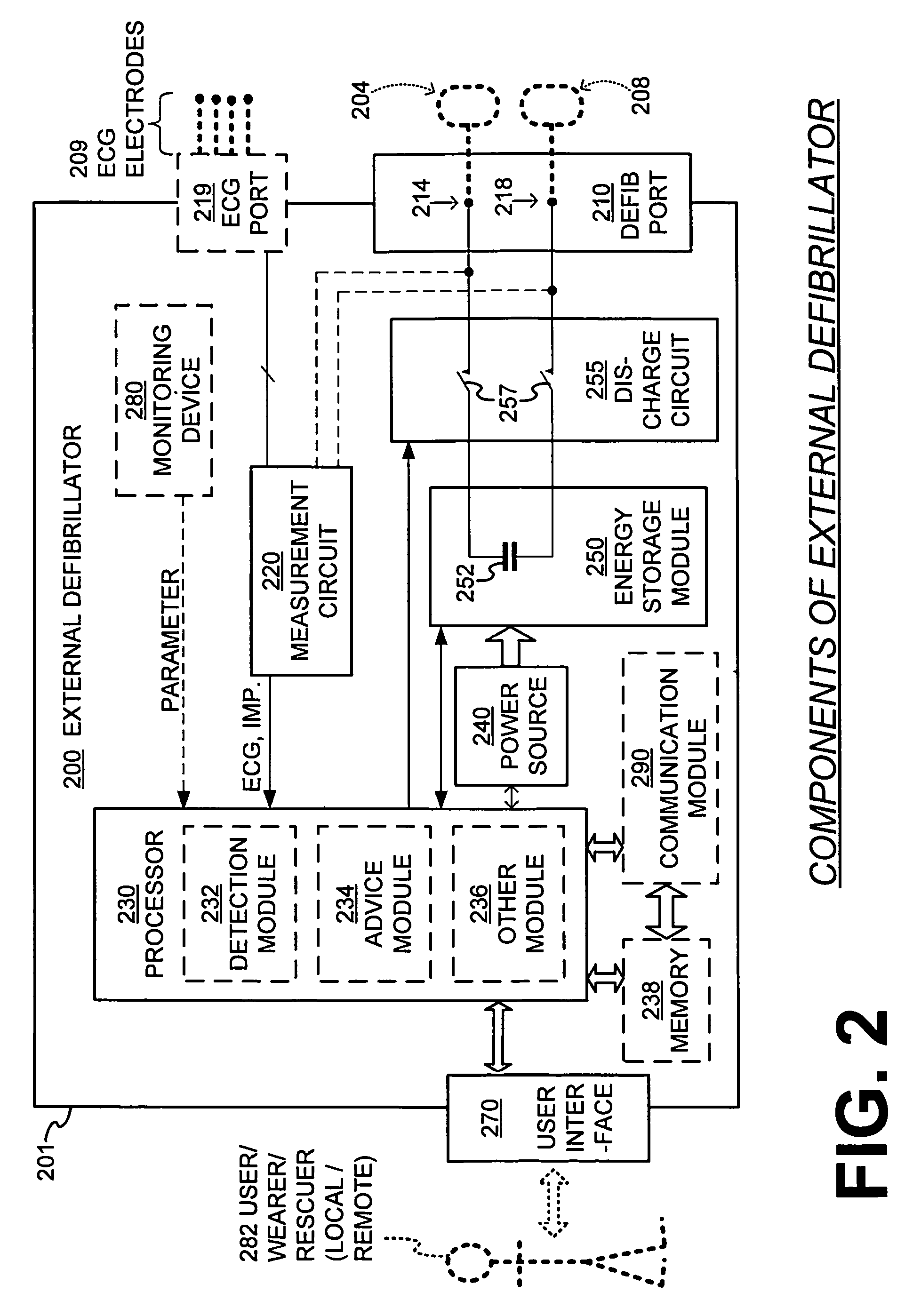Wearable cardiac defibrillator receiving inputs by being deliberately tapped and methods
a cardiac defibrillator and wearable technology, applied in external electrodes, electric signalling details, therapy, etc., can solve the problems of cost saving and less exactness, and achieve the effect of saving cost and preserving dignity and privacy
- Summary
- Abstract
- Description
- Claims
- Application Information
AI Technical Summary
Benefits of technology
Problems solved by technology
Method used
Image
Examples
Embodiment Construction
[0020]As has been mentioned, the present description is about wearable defibrillation systems. Embodiments are now described in more detail.
[0021]FIG. 1 depicts components of a wearable defibrillator system, which is intended to be worn by a patient 82. Patient 82 may also be referred to as person 82, and wearer 82 since he or she wears components of the wearable defibrillator system.
[0022]One of the components of a wearable defibrillator system according to embodiments is a support structure, which is configured to be worn by patient 82. The support structure can be any structure suitable for wearing, such as a harness, a vest, one or more belts, another garment, and so on. The support structure can be implemented in a single component, or multiple components. For example, a support structure may have a top component resting on the shoulders, for ensuring that the defibrillation electrodes will be in the right place for defibrillating, and a bottom component resting on the hips, fo...
PUM
 Login to View More
Login to View More Abstract
Description
Claims
Application Information
 Login to View More
Login to View More - R&D
- Intellectual Property
- Life Sciences
- Materials
- Tech Scout
- Unparalleled Data Quality
- Higher Quality Content
- 60% Fewer Hallucinations
Browse by: Latest US Patents, China's latest patents, Technical Efficacy Thesaurus, Application Domain, Technology Topic, Popular Technical Reports.
© 2025 PatSnap. All rights reserved.Legal|Privacy policy|Modern Slavery Act Transparency Statement|Sitemap|About US| Contact US: help@patsnap.com



